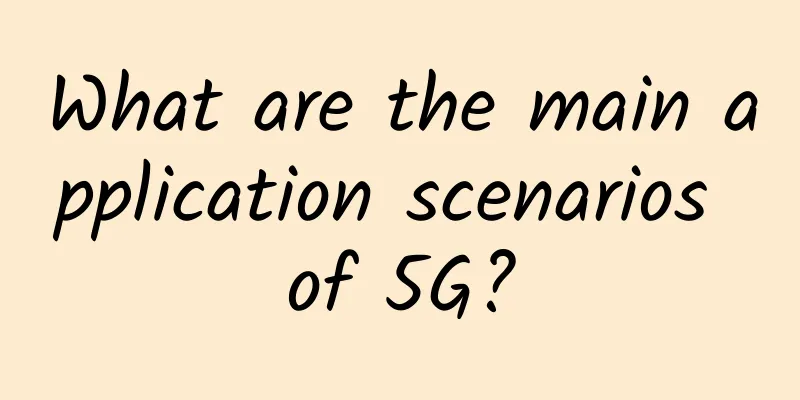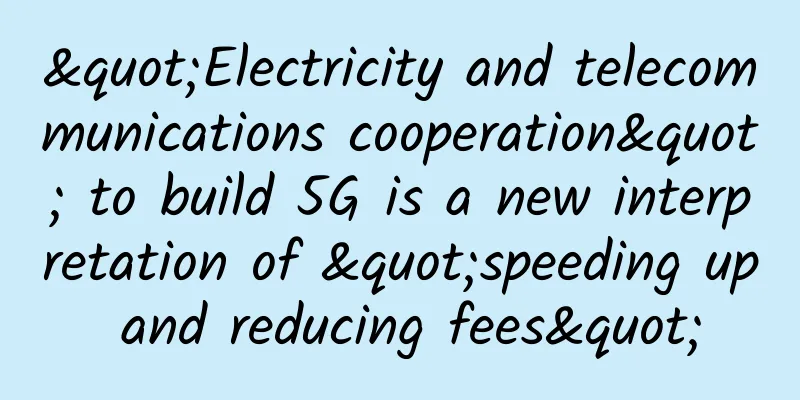What are the main application scenarios of 5G?

|
5G networks offer greater bandwidth than previous generations of networks. This is very useful for businesses that require high-speed and scalable network access. If you are considering using a private 5G network for your business, this article can provide new insights into the relevance of using such technology in your industry. What is 5G5G is a new generation of mobile communications that is very different from previous solutions, especially 4G. Its main advantages include:
The generations of mobile communications were initially a rather arbitrary concept, but in retrospect, the chronological order of their development is as follows:
Several international organizations are working on the development of 5G, including: 3GPPThe alliance, which was established to standardize 3G technology, has become one of the industry's leading organizations, bringing together international regulators and corporate players to jointly develop wireless standards. ITU Radiocommunication SectorThe branch of the United Nations responsible for communications technology controls the standardization process for radio communications technology and manages the international radio spectrum. 5G spectrumIf clickbait headlines and viral social media posts have led you to believe that 5G means ubiquitous coverage, gigabit speeds, and spectrum in the 3-4GHz range, you are misled. In many ways, the situation is more mundane and complex. First, the transition to higher frequencies is not directly related to an increase in speed. Second, the spectrum is much wider than the infamous 3.4-3.8GHz range. 5G even uses outdated frequencies like 700MHz and can go as high as 70GHz. Finally, don’t expect incredibly high speeds right out of the gate, especially for regular users. Of course, this is a real prospect, but until infrastructure is deployed in the millimeter wave range (mmWave), which is the shortest, but offers speeds of several gigabits per second, existing capacity will not provide such a significant increase in parameters. In 5GNR (5G New Radio) there are two frequency bands:FR1FR1 includes the legacy frequencies, the so-called sub-6GHz range, i.e. below 6GHz. Due to frequency restructuring, parts of the range of previous generations will be transferred to 5G needs. Improved coding techniques will make the new generation of communications 30% more efficient than LTE in the same spectrum. The bandwidth determines the amount of data transmitted. The wider its range, the more information can be passed with its help. Currently, the most common practice is to allocate 5, 10 and 20MHz bands, combined to form 100MHz channels. When the sub-6Ghz bands turn to 5G on a large scale, it will be possible to expand the bands to 160MHz, while in the millimeter range we will talk about 300, 400 and up to 800MHz fixed access channels. FR2FR2 is basically a completely new millimeter wave frequency. They start at 24GHz and can go up to about 50GHz or even higher, depending on the country and the operator. These frequencies have short range and penetration. Their functionality will be ensured not by traditional base stations, but by numerous small base stations such as small cells. Frequency reorganization is not unique to 5G, but it is also worth noting. In fact, each generation of mobile communications differs from the previous one not only in terms of range changes, but also in new coding technologies. At the same time, the ability to work on the basis of the previous generation of infrastructure remains. That is, the base stations previously used for LTE or GSM, etc. will continue to operate on the same frequencies, but will transmit data based on 5G technology. The reorganization will save infrastructure expenses and provide optimal coverage for the new generation networks. The initial phase of their rollout on existing equipment serving 4G networks is the NSA (non-standalone) phase. When the necessary infrastructure is ready, SA (standalone) 5G networks can be utilized to support full next-generation benefits. Who is 5G technology relevant to?5G is associated with super-fast internet, AR/VR, smart homes, driverless cars, etc. But in addition to consumer uses, the technology also has industrial applications. There are three basic scenarios for using 5G mobile communications:1. Enhanced Mobile BroadbandOrdinary users surf the Internet, but at a much faster speed and with higher quality. Up to 1Gbit/s indoors and 300Mbit/s outdoors. The highest speeds will be possible when installing state-of-the-art millimeter-scale antennas. Due to their small size, they are ideal for landscape applications. For example, on utility poles, trees and walls of buildings. 2. Ultra-reliable, low-latency communicationsIn communications, speed is not as important as low latency. This is relevant for self-driving cars, which may need less than a millisecond to make a decision in an emergency. There are discussions underway to replace satellite navigation with similar technology. 3. Large-scale machine communicationMachine-to-machine communication or M2M and IoT are a separate segment of 5G communication consumers. It is characterized by the connection of a large number of devices, usually industrial equipment, with low power consumption, and its main requirements are stability and reliability of connection. In particular, measuring equipment, instruments, sensors and smart city infrastructure. The goals of this market segment are usually achieved by deploying dedicated 5G mobile networks. SummarizeDepending on your organization’s specific needs and goals, using 5G networks for business purposes may make sense. |
>>: How wireless technology will improve connectivity, efficiency and consumer experience in 2024
Recommend
HostXen fully upgrades KVM, new users get 20 yuan for registration, monthly payment starts from 70 yuan for 6G memory in the United States/Japan/Hong Kong
HostXen sent the latest information, the platform...
Huawei Storage promotes the "all-cloud, flash-based" strategy to eliminate bottlenecks in migrating key services to the cloud
[51CTO.com original article] With the development...
Implementing a simple TCP custom protocol based on Kotlin
1. Development Background If you want to be an ex...
Is your online office software a helper or a killer?
Zoom, the leading video conferencing company, wit...
All the information about IPv6 is here? Learn more in one article
Now many operators support IPv6. The day before y...
ExtraVM: 1Gbps unlimited traffic VPS starting from $5 per month, in data centers such as Los Angeles/Dallas/Netherlands/Japan/Singapore
Founded in 2014, ExtraVM is a foreign hosting com...
Ministry of Industry and Information Technology: Regulate network fee marketing behaviors and strictly investigate behaviors such as "forced promotion of 5G packages" and "exaggerated promotion of packages"
[[394197]] April 19 news (LeSi) At the regular po...
AkkoCloud Germany/UK CN2 GIA replenishment annual payment starts from 299 yuan, 300-600M bandwidth
AkkoCloud is a merchant that mainly provides VPS ...
What is the handshake process like when connecting to a host whose IP does not exist?
[[410045]] This article is reprinted from the WeC...
1.2 trillion investment! After reaching the summit of Mount Everest, how will 5G be implemented?
Recently, China's three major operators have ...
7 ways to understand the 5G standards in June
MicrosoftInternetExplorer402DocumentNotSpecified7....
Huawei promises to provide public cloud services in the long term and is committed to building the "Five Clouds"
HUAWEI CONNECT 2017 opened today at the Shanghai ...
Five changes that 5G will bring to operators
There is no doubt that several operators are acti...
What exactly is semantic communication?
As we all know, since the outbreak of the informa...
OlinkCloud: $5.6/month KVM-1GB/10G SSD/500GB/San Jose
Tribe shared the news about Olink.Cloud in Novemb...









